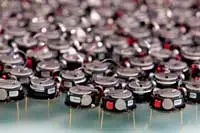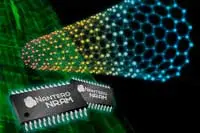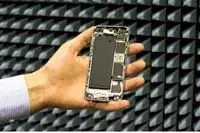Electronics News
Archive : 31 August 2016 год
.webp) A three year European research project, which closes today, has launched a set of tools that is said to make computer systems more energy efficient.
A three year European research project, which closes today, has launched a set of tools that is said to make computer systems more energy efficient.
The EU funded Excess project, led by Chalmers University of Technology, set out to address what it saw as a lack of holistic, integrated approaches to cover all system layers from hardware to user level software. The project initially analysed where energy was wasted and has used that data to develop a framework that, it believes, should enable rapid development of energy efficient software.
“There was a clear lack of tools and mathematical models to help the software engineers to program in an energy efficient way and to reason abstractly about the power and energy behaviour of their software,” said project leader Professor Philippas Tsigas from Chalmers. “The holistic approach of the project involves both hardware and software components, enabling the programmer to make power aware architectural decisions early. This allows for larger energy savings than previous approaches, where software power optimisation was often applied as a secondary step.”
The Excess project believes it has taken ‘major steps’ towards providing software developers and system designers with tools and models which allow them to program energy efficiently. The tool box is said to span from energy saving hardware components, such as the Movidius Myriad platform, to efficient libraries and algorithms.
Pic: The Excess project includes methodology, software and hardware, including Movidius' Myriad processors, to boost the energy efficiency of software
Author
Graham Pitcher
Source: www.newelectronics.co.uk
 According to researchers at the University of Sheffield, it is now possible for machines to learn how natural or artificial systems work by simply observing them, without being told what to look for. This could mean advances in machines being able to predict, among other things, human behaviour.
According to researchers at the University of Sheffield, it is now possible for machines to learn how natural or artificial systems work by simply observing them, without being told what to look for. This could mean advances in machines being able to predict, among other things, human behaviour.
Dr Roderich Gross from the Department of Automatic Control and Systems Engineering at the University of Sheffield, said: “Our study uses the Turing test to reveal how a given system works. In our case, we put a swarm of robots under surveillance and wanted to find out which rules caused their movements. To do so, we put a second swarm - made of learning robots - under surveillance too. The movements of all the robots were recorded, and the motion data shown to interrogators.”
He added: “Unlike in the original Turing test, however, our interrogators are not human but rather computer programs that learn by themselves. Their task is to distinguish between robots from either swarm. They are rewarded for correctly categorising the motion data from the original swarm as genuine, and those from the other swarm as counterfeit. The learning robots that succeed in fooling an interrogator, by making it believe their motion data were genuine, receive a reward.”
Dr Gross explained the advantage of the approach, called ‘Turing Learning’, is that humans no longer need to tell machines what to look for.
The discovery could be used to create algorithms that detect abnormalities in behaviour. This could prove useful for the health monitoring of livestock and for the preventive maintenance of machines, cars and airplanes.
Turing Learning could also be used in security applications, such as for lie detection or online identity verification.
Author
Tom Austin-Morgan
Source: www.newelectronics.co.uk
 Fujitsu Semiconductor and Mie Fujitsu Semiconductor have announced that they will begin developing carbon nanotube based memory products using Nantero’s CNT NRAM technology.
Fujitsu Semiconductor and Mie Fujitsu Semiconductor have announced that they will begin developing carbon nanotube based memory products using Nantero’s CNT NRAM technology.
The licensing agreement between Fujitsu and Nantero will cover the joint development of ultra-fast, ultra-high-density NRAM, non-volatile RAM using carbon nanotubes. Both companies said that they were aiming to develop a product using NRAM non-volatile RAM that would be able to achieve significantly faster rewrites and more rewrite cycles.
“We are looking at rewrite and cycles up to a thousand time faster than embedded flash memory, making NRAM potentially capable of replacing DRAM with non-volatile memory,” said Greg Schmergel, Nantero’s Chairman & CEO.
Nantero will be working with Fujitsu to develop an initial product that will be a 55nm embedded memory based on planar NRAM and which is scheduled to enter the market in 2018.
Fujitsu Semiconductor plans to develop a NRAM-embedded custom LSI product by the end of 2018, beyond which it is planning to expand the product line-up into stand-alone NRAM product. Mie Fujitsu Semiconductor, which is a pure-play foundry, plans to offer NRAM-based technology to its foundry customers.
“Non-volatile memory using Nantero’s carbon-nanotube technology is a marked advance beyond conventional technology,” said Masato Matsumiya, System Memory VP, Fujitsu Semiconductor. “As a company we have been designing and producing FRAM, a type of non-volatile RAM, since the late 90s. We are just one of a few companies to have integrated FRAM design and production capabilities and will use our experience and skill in this field to develop and produce NRAM as well. The combination of Nantero’s technology with our design and production capabilities promises to meet the longstanding needs of our customers for non-volatile memory that is higher density, faster, more energy efficiency, and with a higher rewrite cycle.”
That experience was “crucial,” according to Schmergel. He continued, “Both companies are ideal commercialisation partners for Nantero as their experience with FRAM makes them among the world’s most successful companies in mass production of new memory devices.”
“Nantero’s NRAM technology is based on carbon nanotubes and allows for non-volatile memory with high density and random access, promising to expand Mie Fujitsu Semiconductor’s line of embedded non-volatile memory products,” said Masahiro Chijiiwa, Director and Corporate SVP, Mie Fujitsu Semiconductor. “In working with Nantero to develop their technology into products and license that technology, together with Fujitsu Semiconductor, we will be able to offer our customers new kinds of non-volatile random-access memory solutions.”
Author
Neil Tyler
Source: www.newelectronics.co.uk
 Antennas currently in use are mostly based on technology developed 50 years ago, but work undertaken by Aalto University researchers has the potential to allow antennas to enter the digital world.
Antennas currently in use are mostly based on technology developed 50 years ago, but work undertaken by Aalto University researchers has the potential to allow antennas to enter the digital world.
Until now, says the team, antennas support either a broad frequency range or high efficiency, but radiation efficiency has been decreasing because mobile phones use more frequencies and this has led to shorter transmission range and more basestations.
“Traditionally,” said Jari-Matti Hannulan, “one antenna works with either one or a few different frequencies. Now, we can take advantage of digital electronics to combine several small antenna elements to work together as one antenna that can be made to operate digitally with any frequency.”
The new antenna design is also said to make it possible to support higher data transfer rates, whilst extending battery life through greater efficiency.
Professor Ville Viikari believes the new method will revolutionise 5G communications. “The next step in the development process is underway, with the commencement of tests in cooperation with Huawei. We are also developing, together with Aalto University researchers, digital electronic systems for controlling the antennas.”
Using the approach, smartphone applications like GPS, Bluetooth and Wi-Fi will be able to use one digitally controlled antenna. This, the research team notes, could make phone design easier and allow a larger screen to be used.
Author
Graham Pitcher
Source: www.newelectronics.co.uk
